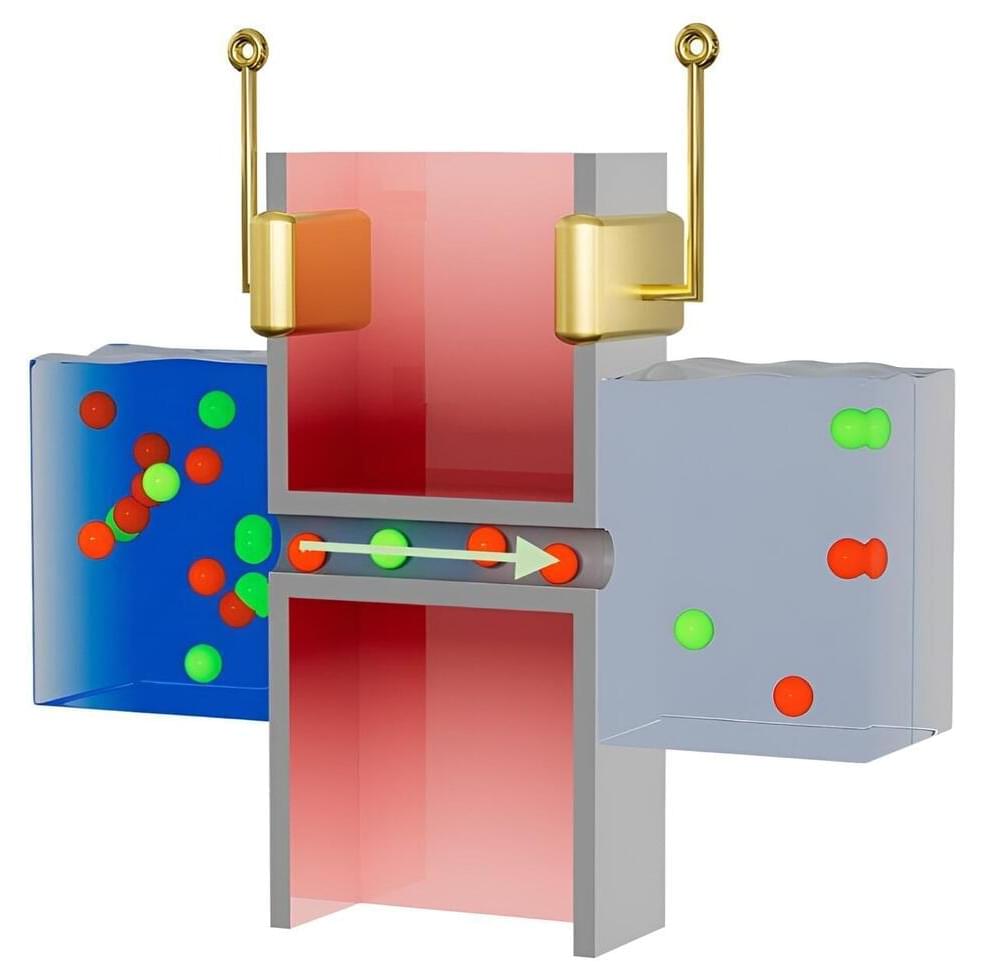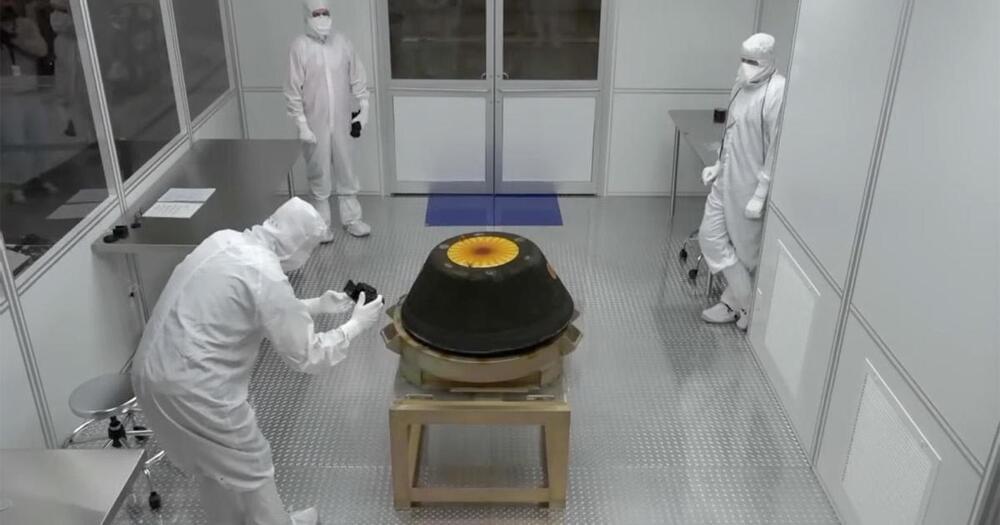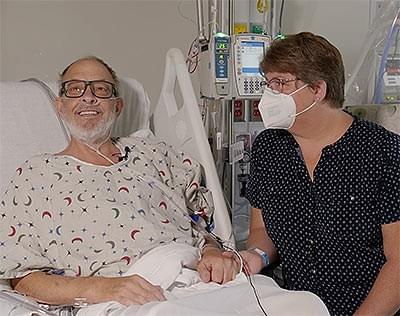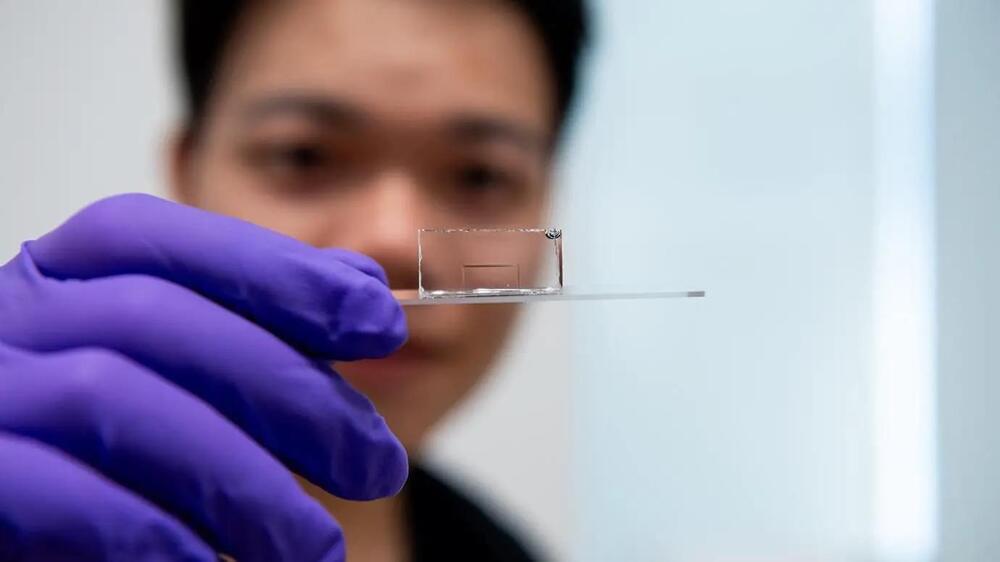In the 1950s, geologist Marie Tharp turned depth measurements into detailed maps of the ocean floor. It led to her discovery of the Mid-Atlantic rift.



There is a largely untapped energy source along the world’s coastlines: the difference in salinity between seawater and freshwater. A new nanodevice can harness this difference to generate power.
A team of researchers at the University of Illinois Urbana-Champaign has reported a design for a nanofluidic device capable of converting ionic flow into usable electric power in the journal Nano Energy. The team believes that their device could be used to extract power from the natural ionic flows at seawater-freshwater boundaries.
“While our design is still a concept at this stage, it is quite versatile and already shows strong potential for energy applications,” said Jean-Pierre Leburton, a U. of I. professor of electrical & computer engineering and the project lead. “It began with an academic question—’Can a nanoscale solid-state device extract energy from ionic flow?’—but our design exceeded our expectations and surprised us in many ways.”


As we age, our muscles and other tissues break down in much the same way as degenerative diseases progress. What we learn from studying degenerative diseases such as muscular dystrophy could help researchers develop new interventions to fight common age-related ailments and chronic illnesses.
With help from NIA, biotechnology company Juvena Therapeutics has begun unlocking the secrets of proteins for regenerative medicine. Juvena scientists are using a form of muscular dystrophy — myotonic dystrophy type 1 (DM-1) — as a model to sift through proteins that are produced by the body’s stem cells. These cells have the potential to become any type of cell in the body, from liver tissue to skin cells. The goal is to find proteins that encourage tissue growth and repair, ultimately designing new drugs to prevent and treat degenerative diseases like DM-1. As part of this process, Juvena hopes to learn more about how to reduce the effects of aging on muscles and other tissues, too.
A new biotech trying to establish itself can feel isolated from the larger scientific community. For example, Juvena is unable to submit findings for publication before taking care of intellectual property protections. But NIH’s peer-review process offered confidential, scientifically rigorous feedback to fill that critical gap, and the NIA Small Business Programs staff offered helpful advice.
“We can get the input, guidance, and advice that we need to really better the work,” Yousef said.
Five years in, the company has now raised about $60 million. But Yousef said that NIA funding is more than just financial support and feedback. It gives the company no-strings-attached freedom to explore the scientific potential of their ideas as well as the capital needed to pursue preclinical development of new leads, unlike loans or business obligations that come with venture capital.
Lithium-ion batteries could get a significant boost in energy density from disordered rock salt (DRX), a versatile battery material that can be made with almost any transition metal instead of nickel and cobalt.
DRX cathodes could provide batteries with higher energy density than conventional lithium-ion battery cathodes made of nickel and cobalt, two metals that are in critically short supply.
Formed last fall, the DRX Consortium – which includes a team of approximately 50 scientists from Berkeley Lab, SLAC National Accelerator Laboratory, Pacific Northwest National Laboratory, Argonne National Laboratory, Oak Ridge National Laboratory, and the University of California at Santa Barbara – was awarded $20 million from the Vehicle Technologies Office in DOE’s Office of Energy Efficiency and Renewable Energy. The funding – allocated in $5 million yearly increments through 2025 – will allow the consortium to develop DRX battery cathodes that could perform just as well if not better than the NMC (nickel-manganese-cobalt) cathodes used in today’s lithium-ion batteries.

A 58-year-old patient with terminal heart disease became the second patient in the world to receive a historic transplant of a genetically-modified pig heart on September 20. He is recovering and communicating with his loved ones. This is only the second time in the world that a genetically modified pig heart has been transplanted into a living patient. Both historic surgeries were performed by University of Maryland School of Medicine (UMSOM) faculty at the University of Maryland Medical Center (UMMC).
The first historic surgery, performed in January, 2022, was conducted on David Bennett by University of Maryland Medicine surgeons (comprising UMSOM and UMMC), who are recognized as the… More.
After world’s first successful transplant in 2022, also performed at the University of Maryland Medical Center (UMMC), this groundbreaking transplant team per.
Now available on Amazon: https://lnkd.in/dd4nx3B
Instagram: https://www.instagram.com/hashem.alghaili/
Facebook: https://www.facebook.com/ScienceNaturePage/
#ScienceFiction #SciFi #Novels #Books #Writing #Stories #Storytelling



Channeling light from one location to another is the backbone of our modern world. Across deep oceans and vast continents, fiber optic cables transport light containing data ranging from YouTube clips to banking transmissions—all within fibers as thin as a strand of hair.
University of Chicago Prof. Jiwoong Park, however, wondered what would happen if you made even thinner and flatter strands—in effect, so thin that they’re actually 2D instead of 3D. What would happen to the light?
Through a series of innovative experiments, he and his team found that a sheet of glass crystal just a few atoms thick could trap and carry light. Not only that, but it was surprisingly efficient and could travel relatively long distances—up to a centimeter, which is very far in the world of light-based computing.